It’s safe to say the retail industry has undergone some changes in recent months. COVID-19 has forced closures across the world and left retailers scrambling. For some, like groceries, the current environment has helped sales, but for others, like fashion retailers, the situation is growing more desperate the longer the public stays inside.
The U.S. Census Bureau reports that overall retail sales in March dropped 6.2% year-over-year, the largest monthly drop ever recorded. Fashion retailers seem to have taken the brunt of the blow, however, with sales dropping 50.5% from February to March.
With e-commerce sales taking larger and larger portions of annual sales with each passing year, it could be argued that simply staying inside wouldn’t necessarily be a nail in the coffin for fashion retailers. But shelter-in-place ordinances have shifted consumer spending and redefined what is considered discretionary or essential.
Groceries are an obvious essential—people need to eat—but fitness equipment and computers have both seen steep boosts in online sales (55% and 40% respectively) in an effort to access creature comforts of the outside world from the safety of our living rooms. For many, it’s less important now to dress well than maintain physical and mental health.
In January 2020, we kicked off a three-week research study of five leading fashion retailers (Bloomingdale’s, Neiman Marcus, Rent the Runway, Macy’s, and Saks Fifth Avenue). Modern lifestyles are happening more and more via mobile devices. With that in mind, we wanted to see how these organizations were utilizing mobile marketing to interact with their customers.
We downloaded their apps, browsed items on mobile, and even abandoned our carts in the hopes of seeing our behavior integrated into their marketing campaigns. The results of that research can be found in our newest User Engagement Teardown.
But, as we’ve covered, times have changed. Marketing in January of this year might as well have been a different era compared to how companies can interact with their audiences now. So, we worked with our friends at MailCharts, a leading e-commerce email marketing database to see just how differently the marketing landscape is for fashion retailers under COVID-19.
Fashion Retail Marketing in the Before Times
Prior to shelter-in-place, fashion retailers were humming along with their usual marketing practices. Sales reigned supreme as the core driver of engagement. Mid-to-late January lends itself well to thematic promotions with discounted winter clothing and the impending need for Valentine’s Day gifts.
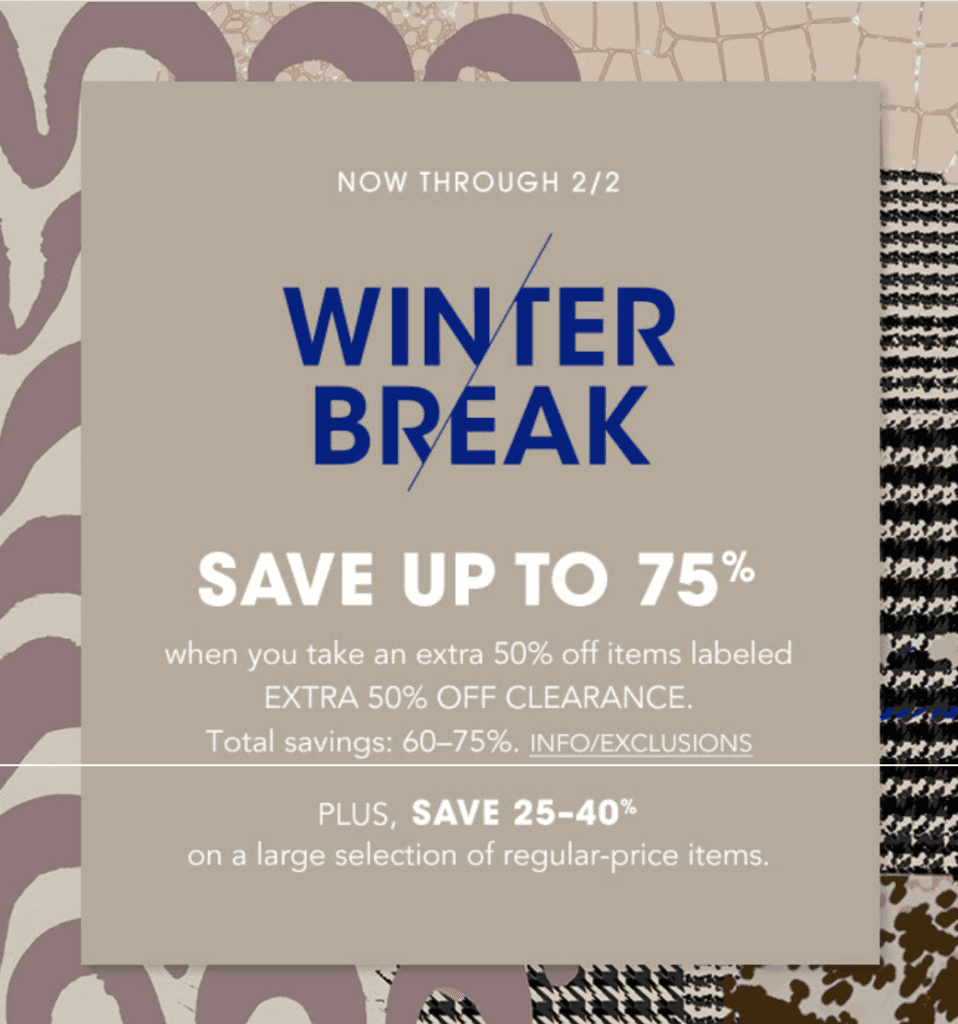

Who can resist up to 75% off? Stay warm and save money!
Occasionally, these brands would push for an in-store visit as foot traffic used to be a strong driver of revenue. Even in promoting the in-store experience, fashion retailers often recognized the presence of e-commerce.
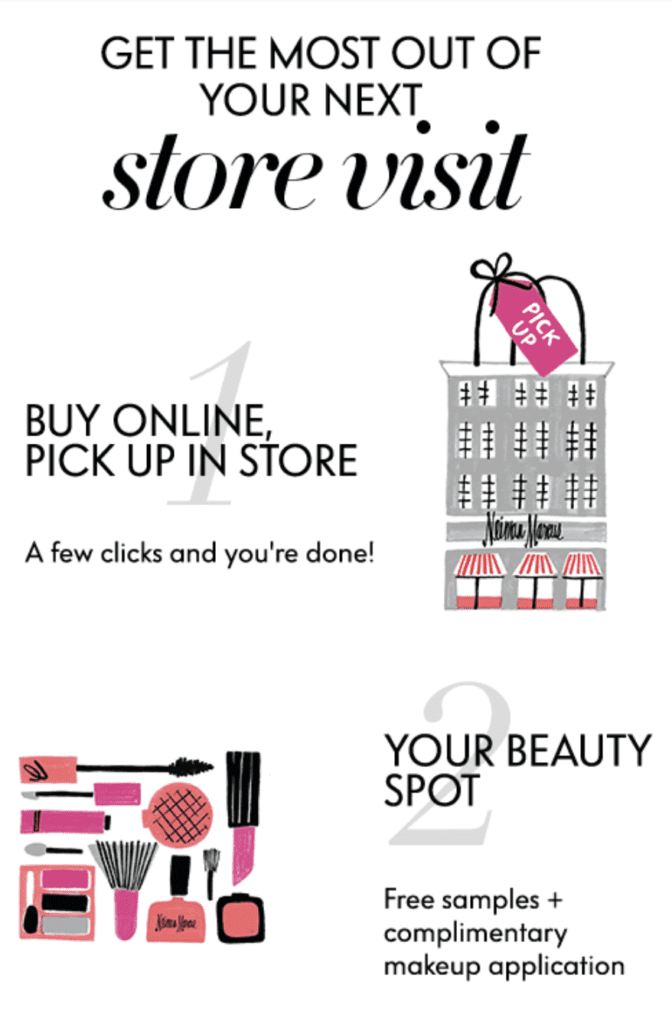

Neiman Marcus smartly looked to simplify the purchasing process and incentivize spontaneous purchases in-store.
For the most part, the messaging over this three-week period stayed neutral, focusing more on “you” and what “you’ll love” rather than contextualizing the clothing in a situation, such as at an event or working from home.
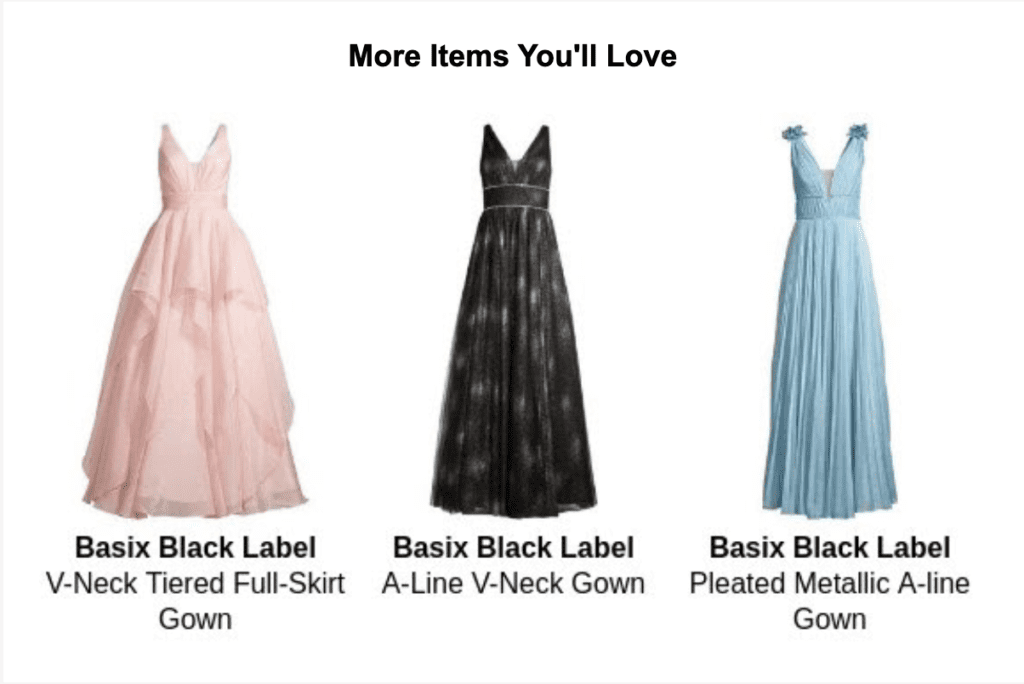

Product recommendations are a staple in fashion marketing.
Fashion Retail Marketing Today
And then everything changed.
Much like their fellow marketers across the world, fashion retail marketers had to adapt to a new world order. In-store sales became a moot point and empathy took over. Nowadays, we’re seeing these same retailers altering their frequency and messaging to fit the new consumer lifestyle.
Rent the Runway, in particular, had to shift gears drastically as the need for renting designer clothing and accessories plummeted. Instead, they’ve switched to promoting work-from-home styles, even going so far as promoting attire for digital events.


Adapting to the consumer’s environment builds trust that your brand will look out for the user no matter what. Source: MailCharts
Macy’s dove into the workout-from-home boon by offering recommendations on their best workout clothes. Their messaging also shifted to directly call out the store closures and charities they’ve partnered with like Meals on Wheels.
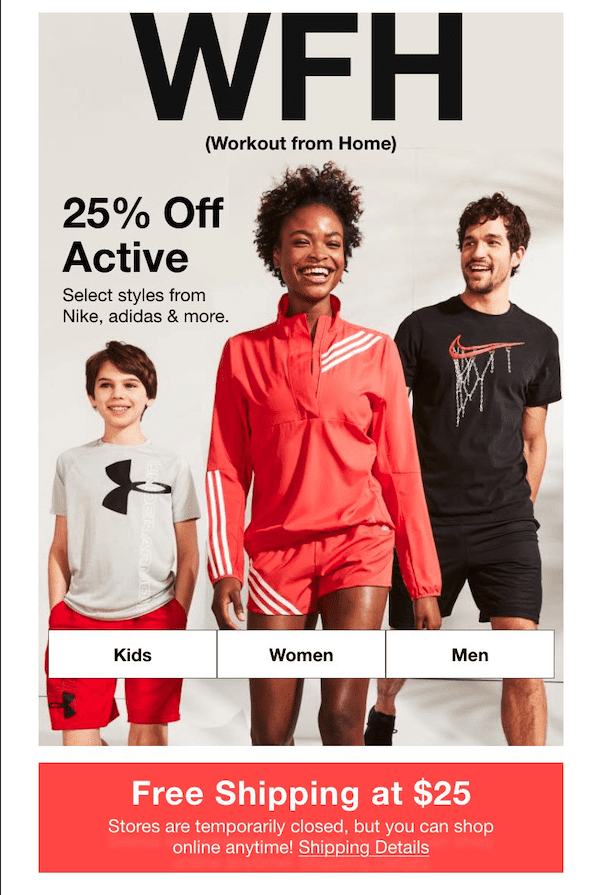

You may not be able to find a kettlebell, but you can still be stylish while working out from home. Source: MailCharts
Finally, moving beyond fashion, retailers have taken this opportunity to promote their lesser-known items. Home essentials have shown up more frequently in recent months, especially as consumers look to cook for themselves.
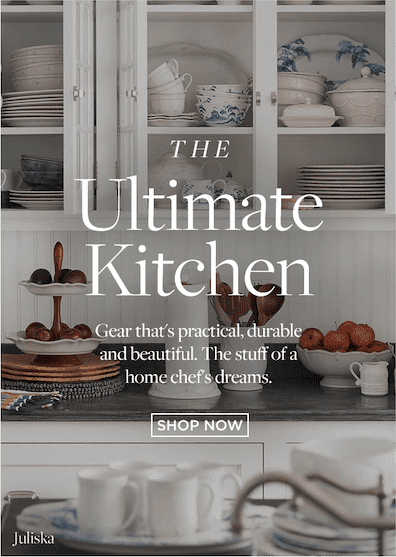

Everyone is a home chef now…whether they like it or not. Source: MailCharts
Where Do Fashion Retailers Go From Here?
Short answer: who knows.
Longer, more reasonable answer: pieces of the shelter-in-place lifestyle will remain. Some consumers will keep their status as burgeoning home chefs and look to fill out their kitchens.
Others may work from home for the long term. The effects and sustainability of the new lifestyle remain to be seen. But, the willingness to adapt shown by these retailers shows that it is possible for marketers to keep pace. It starts with an empathetic mindset and is executed through expert data management.
Consumers are looking for products with different needs in mind. It’s up to you as the marketer to understand this behavior and tailor messaging to be relevant and helpful. Keeping the user’s environment in mind will help navigate this tricky situation, and could even lead to new insights and campaign strategies for future success.
Who knows?
For more about fashion retail marketing and a host of other industries, check out our User Engagement Teardowns analyzing their messaging.
































